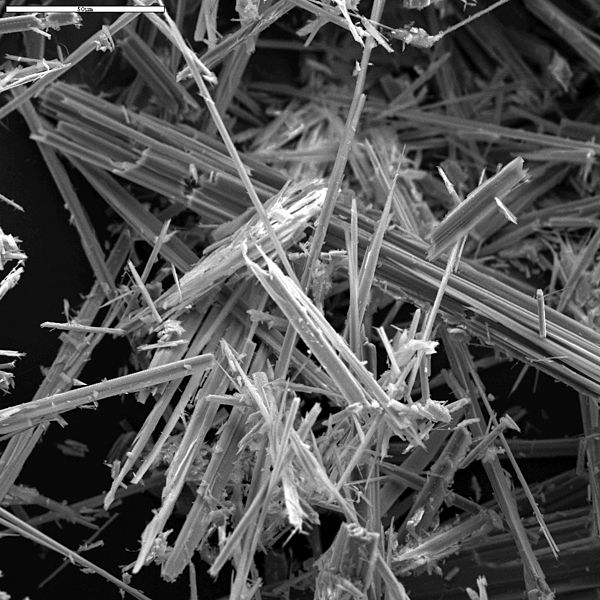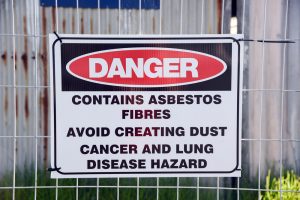EPA May Ease Regulations on the Carcinogen Banned in More Than 50 Countries
Environmental Protection Agency Director Scott Pruitt’s noncommittal stance on the banning of asbestos during his confirmation process has many worried he would ease regulations on the deadly carcinogen. Asbestos made EPA’s list of top 10 most dangerous chemicals in December.
Pruitt hedged when he responded to questions about the ban of asbestos, citing the Frank R. Lautenberg Chemical Safety for the 21st Century Act and its risk evaluation process required for toxic substances like asbestos. That law, signed by President Barack Obama last June, gives the EPA up to three years to weigh the risks of asbestos to human health and the environment before taking action.

“Prejudging the outcome of that risk evaluation process would not be appropriate,” Pruitt wrote in response to Senators’ questions.
The EPA just denied a petition by several environmental groups that suggests Pruitt has few problems approving deadly chemicals with little to no regulation.
The environmental groups favor requiring manufacturers to test chlorinated phosphate esters, or CPE cluster, a flame-retardant chemical found in furniture foams, textiles, paints and insulation, for hazardous effects. CPE can cause cancer, interfere with human reproduction and is especially harmful to first responders. Rep. Peter Welch (D-VT) and 26 House colleagues called on the EPA to regulate the chemical cluster in November. The EPA published an initial assessment and risk analysis of the CPE cluster two years ago and believes no further testing is necessary at this point. The proposed CPE regulations can be read here.
Asbestos, a group of naturally occurring fibrous minerals that are resistant to heat and corrosion, becomes toxic once airborne fibers are ingested or inhaled. That can happen when a product containing asbestos is disturbed in some way, which is why asbestos-related illnesses and death are so prevalent in certain industries, like construction and ship repair. Once the fibers are airborne, no level of exposure is safe for any asbestos fiber, according to the U.S. Occupational Safety and Health Administration.
Ingested fibers can lead to gastrointestinal cancer. Inhaled fibers can cause chronic lung disease and cancer, such as mesothelioma. Exposure to asbestos is linked to about 15,000 deaths in the U.S. each year.
The EPA banned most products containing asbestos in 1989. But the regulation was overturned by the Fifth Circuit Court of Appeals in New Orleans two years later after an asbestos manufacturer sued the EPA and won. That landmark case hobbled the EPA and as a result, only some asbestos-containing products remain banned. But things like clothing, gaskets, vinyl floor tile and cement pipes containing asbestos are still legally manufactured, imported and distributed in the U.S. The carcinogen is banned outright in more than 50 countries, according to the Web site and patient advocacy group Asbestos.com.
ACTION BOX / What you can do about it
Tell Pruitt your thoughts via his Facebook and Twitter sites. His email is [email protected]
His phone number is 202-564-4700.
Write him at:
USEPA Headquarters
William Jefferson Clinton Building
1200 Pennsylvania Avenue, N. W.
Mail Code: 1101A
Washington, DC 20460
Contact your representative and senators.
And then there’s the fact that the Clean Air Act defines the EPA’s responsibilities for protecting and improving air quality and provisions for setting national emissions standards for hazardous air pollutants, including asbestos. Pruitt has that piece of legislation in his crosshairs and has already stripped away some of its efforts despite his short time at the agency.
Add to the mix Donald Trump’s declared fondness for the carcinogen, coupled with his and Pruitt’s pro-industry drive and the smart money’s on greater leniency on asbestos regulation in this new administration. Trump has hailed asbestos as “the greatest fireproofing material ever made” and even went so far as to suggest, albeit erroneously, that the Twin Towers collapsed on 9/11 due to a lack of asbestos in the buildings.
Hundreds of tons of asbestos were released into the atmosphere when the North Tower crashed on 9/11. Nearly 70% of the rescue and recovery workers at Ground Zero showed new or worsened respiratory symptoms while working at the site, according to one study.
Illnesses related to asbestos exposure can have a latency period between 10 and 40 years between the first exposure and the onset of symptoms, according to the National Cancer Institute at the National Institutes of Health. And that explains why cancer cases among the World Trade Center workers are now on the rise.
It’s your government!
Help DCReport.org keep watch on the Trump Administration and Congress.
[wpedon id=”4360″]






